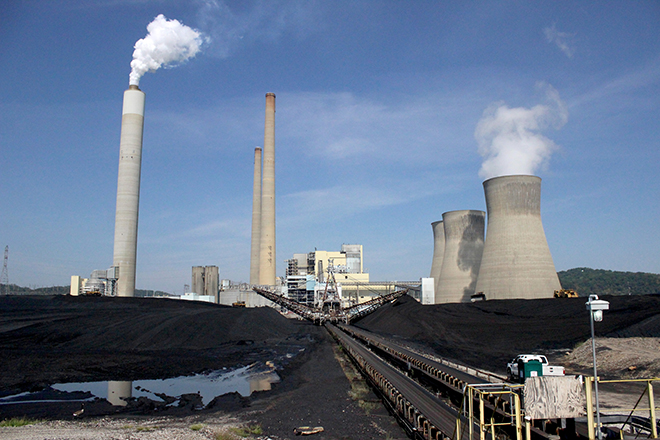 The US Department of Energy (DOE) has released a 127-page report, “Investigating Benefits and Challenges of Converting Retiring Coal Plants into Nuclear Plants”, identifying 157 retired coal plant sites and 237 operating coal plant sites as potential candidates for a coal-to-nuclear (C2N) transition. The study, conducted by Argonne National Laboratory, Idaho National Laboratory, and Oak Ridge National Laboratory, sponsored by DOE’s Office of Nuclear Energy, said 80% of the identified plants were good candidates to host advanced small reactors.
The US Department of Energy (DOE) has released a 127-page report, “Investigating Benefits and Challenges of Converting Retiring Coal Plants into Nuclear Plants”, identifying 157 retired coal plant sites and 237 operating coal plant sites as potential candidates for a coal-to-nuclear (C2N) transition. The study, conducted by Argonne National Laboratory, Idaho National Laboratory, and Oak Ridge National Laboratory, sponsored by DOE’s Office of Nuclear Energy, said 80% of the identified plants were good candidates to host advanced small reactors.
According to the study, C2N could add a substantial amount of clean electricity to the grid, helping to achieve net-zero emissions goals by 2050. Greenhouse gas emissions in a region could fall by 86% by replacing coal plants with NPPs. In addition, jobs in the region could increase by more than 650 permanent positions Long-term job impacts could lead to additional annual economic activity of $275 million, implying an increase of 92% tax revenue for the local county compared with a coal powered plant.
The reuse of coal infrastructure for advanced nuclear reactors could also reduce costs for developing new nuclear technology, saving 15-35% in construction costs. C2N transitions could save millions of dollars by reusing the coal plant’s electrical equipment (transmission lines, switchyards), cooling ponds or towers, and civil infrastructure such as roads and office buildings.
Based on the results of the study “at least four key, high-level conclusions can be drawn”:
- Economic potential exists for owners of coal-powered plants (CPPs) and communities where such plants are located. “The results reported here imply cost savings from repurposing coal infrastructure. Given this finding, coupled with the reality that 32% of operating CPP sites have announced retirement dates … economic potential exists for the remaining 68% of CPP sites.” The second takeaway is that C2N transitions “may be an economic boost for disadvantaged communities”.
- Opportunities likely exist for first-mover projects. The study results “suggest economic potential for communities and firms that pursue C2N transitions”. There is “a potential advantage for interested coal communities to be first movers in what could be a series of many C2N transitions across the United States”. Early adopter communities can “get ahead” of the transition by working with utility management to update integrated resource plans with a focus on C2N transitions. “This may be especially important for a utility ownership that does not currently have nuclear as part of their energy generation portfolio. The utility stands to save on capital costs from repurposed infrastructure, and the community stands to mitigate negative outcomes from shutdown of the local power plant.”
- Extensions of this analysis. A limitation of the study is it does not evaluate impacts to the coal mining sector and other upstream supply-chain issues. Recogniding that constructing NPPs creates emissions is also not reflected in this study. “This leaves open the opportunity in a broader, supply-chain analysis to evaluate this impact.” The study also does not consider transitioning other energy assets to clean energy, such as retired steel facilities or petro-chemical plants. “A logical extension is to expand the analysis to consider broader supply-chain implications.”
- This is a study with general-level findings which are informative for case-specific applications. The findings can be used to compare alternative nuclear designs with plant specific characteristics at a CPP. Results of such an approach could then be used to refine the extent of cost savings. The economic impact results suggest that many of the job functions at a CPP match up with the job functions at an NPP. Some do not. These results could be used to refine the types of job transition programmes that a community or utility may want to consider in implementing a C2N transition. “Further, the economic impact study evaluated options for nuclear capacity that in some cases would generate more megawatt hours than the replaced coal capacity. This suggests that case-specific applications could investigate the potential for expanded market opportunity from nuclear capacity.”
“This is an important opportunity to help communities around the country preserve jobs, increase tax revenue, and improve air quality,” said Assistant Secretary for Nuclear Energy Dr Kathryn Huff. “As we move to a clean energy future, we need to deliver place-based solutions and ensure an equitable energy transition that does not leave communities behind.”
Image: Many US coal power plants could be converted to nuclear (courtesy of DOE)






